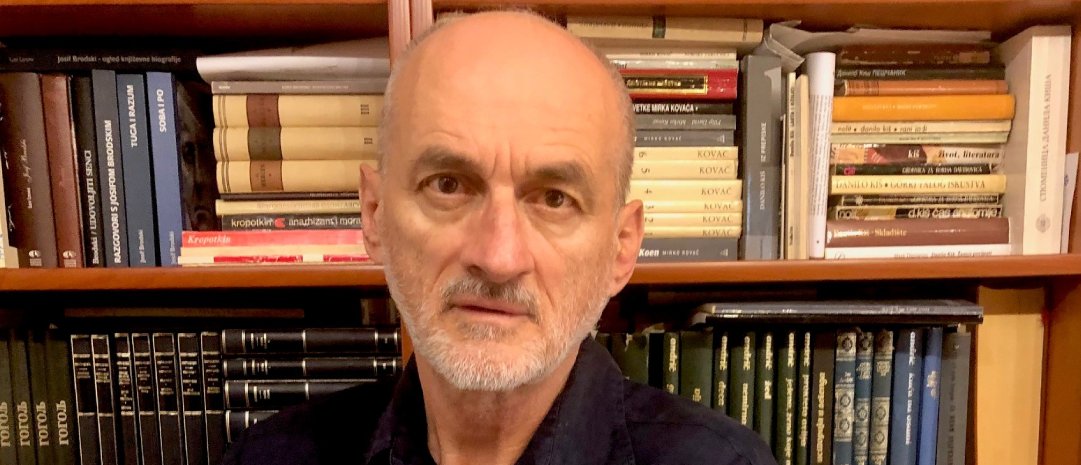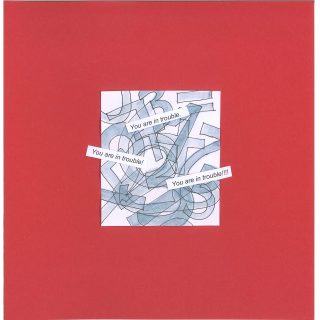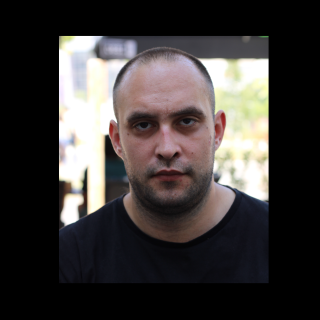It has now been thirty years since February 5th was marked on Sarajevo’s memory map simply and undeniably as – Markale. Situated in the city center, the green market got its name from the nearby marketplace built during the Austro-Hungarian period (Markt halle). On February 5, 1994, it became the site of an unprecedented massacre. That day 68 residents of besieged Sarajevo were killed, and almost 200 were wounded. This tragedy was the result of a single mortar shell.
In the presence of city leadership and a dwindling number of survivors, the citizens of Sarajevo remember that day.
On that day, thirty years ago, nobody in Sarajevo was talking about the perpetrators of this crime. All available vehicles were transporting the wounded and the dead to city hospitals, and citizens were in a state of terrible shock. After all, where else would a shell come from, if not from the same source as the hundreds of thousands of destructive projectiles that had been continuously raining down on the city since April 1992?
The Bosnian Serb leadership, however, reacted instantly. The very same day, they accused the “authorities in Sarajevo” of planting explosives and even preparing dozens of corpses in the vicinity of the market to make the international community blame the Serbs. This narrative of perpetrators posing as victims is reminiscent of the massacre committed against the citizens of Sarajevo who were standing in line for bread (26 killed, 108 wounded) in Vase Miskina Street on May 27, 1992. According to the Bosnian Serb leadership, the citizens of Sarajevo supposedly shelled themselves.
In the regular UNPROFOR report published in besieged Sarajevo for the previous 24 hours, it was stated that on February 5, 1994, 40 projectiles were fired from Serbian positions around the city, with no projectiles registered coming from within the city. The commander of the international military forces, British General Michael Rose, confirmed the data but added that “none of these forty fired and registered projectiles – temporally corresponds to the Markale shell.” No one heard that shell, General Rose stated. He had already told the British media the previous day that ‘It is the same grenade as the one fired from Lukavica (a suburb of Sarajevo under the control of Bosnian Serbs) that fell on Dobrinja.’ Rose suggested to journalists to draw their own conclusions.”
The day before the massacre at Markale, on February 4, 1994, three 120mm mortar shells fell near a public garage in Dobrinja, a Sarajevo neighborhood near the airport. Nine people were killed, including one child under 15, and 16 others were injured. UN experts immediately analyzed these shells and concluded that they had definitively come from Serbian positions.
At the same time, an investigation was underway at Markale, conducted by experts from the Sarajevo police, joined by the UNPROFOR expert team. According to the investigative judge’s statements, 67 people were killed (later definitively determined to be 68), all civilians. There were 86 severely wounded, 59 lightly wounded who were kept in the hospital, while 52 lightly wounded were released after receiving medical assistance. The conclusion was that the Markale massacre was carried out by a 120mm mortar projectile. The projectile’s impact was on the asphalt surface. The possibility of an explosion caused by a static explosive device or the projectile being activated before touching the asphalt was ruled out. The direction from which the projectile came closed an angle of 18 degrees with the north facing east, corresponding to the wider Mrkovići area, which was under the control of the Bosnian Serb army. The estimated angle of descent of the projectile was determined between 55 and 65 degrees relative to the ground. The characteristics of the 120mm mortar shell, which disperses between 3000 and 4000 fragments weighing from half a gram to 30 grams, were also noted.
UNPROFOR expressed its opinion through the headquarters in Zagreb. In mid-February 1994, their spokesperson stated that they “do not know who fired the shell”! The only thing they established was that the shell came from a distance “between 300 to 5551 meters,” where the military units of both sides were located. In other words, they were not sure about the angle at which the shell fell on the Markale market. UNPROFOR announced that by February 18, 1994, new French radars for tracking artillery and mortar fire in the Sarajevo area would be installed.
The Markale case was the subject of three trials before the International Criminal Tribunal for the former Yugoslavia in The Hague. In the case against the former president of Republika Srpska, Radovan Karadžić, in a first-instance verdict the court rejected his claims that the incident was staged, that is, that local authorities caused the detonation of an explosive device in the market, either remotely or by throwing a mortar shell from one of the surrounding buildings. The majority of the judges, with the dissenting opinion of Judge Baird, were convinced beyond a reasonable doubt, that the shell that hit Markale was fired with one of the larger charges and therefore came from the territory under the control of the Sarajevo-Romanija Corps, the Bosnian Serb army. In the appeals process, Karadžić contested the angle at which the shell fell, but the Court found that he had not shown the existence of an error in assessing this evidence. In the second instance court decision, Radovan Karadžić’s sentence was changed from 40 years in prison to life imprisonment, with the dissenting opinions of Judge de Prada and Judge Rosa.
In the trial of the commander of the headquarters of the Bosnian Serb Army, Ratko Mladić, regarding the Markale case, the defense brought in a witness who claimed that Alija Izetbegović (Chairman of the Presidency of BiH) was behind the plan for this attack. This protected witness first claimed to have attended meetings of the Bosnian leadership, then that he only heard what was said, and finally again claimed to have been present. At the same time, according to this witness, the number of meetings discussing the incident varied from one to three. The court council found that these testimonies were not reliable enough to refute the facts which had already been ruled on, namely, that the shell was fired from the positions of the Bosnian Serb army. It was also established that since Ratko Mladić was appointed commander of this army, the shelling of Sarajevo had increased. Ratko Mladić was, with the dissenting opinion of Judge Nyambe, sentenced to life imprisonment.
The Markale case was part of the evidence in the trial against Stanislav Galić, the commander of the Sarajevo-Romanija Corps. He commanded around 20,000 soldiers who besieged Sarajevo for more than a thousand days. The court council thoroughly examined the investigations conducted by the United Nations staff, by local investigators, and expert analyses requested by the parties in the proceedings, and the majority of the members of the council concluded that the shell at Markale was intentionally fired from the area under the control of the Bosnian Serb army. “It was a devastating attack on a civilian target,” the verdict stated, concluding that it was “clear that the Sarajevo-Romanija Corps intentionally attacked civilians, and it was a systematic campaign of shelling and terror.”
In the second instance, a comprehensive evidentiary process was conducted in the Markale case, and the council adhered to the original conclusion that, beyond a reasonable doubt, the shell came from the positions of the Bosnian Serbs. Stanislav Galić, originally sentenced to twenty years in prison, had his sentence changed to life imprisonment by the Appeals Council, with the dissenting opinions of Judge Pocar and Judge Meron.
Thirty years after that February 5th, contrary to all legally accepted evidence, as well as logic and morality, the monstrous narrative persists that the residents of besieged Sarajevo were victims of their own crime. In addition to that narrative, there is an intentional and malicious ignoring of this date.
Boro Kontić, a longtime journalist from Sarajevo, began his career at Radio Sarajevo in 1979.
During the Markale massacre, he reported for Voice of America.
Since 1995, he has led the Media Center (www.media.ba), which focuses on training journalists, analyzing media practices, and digital media archives.
Translated by Luna Đorđević




